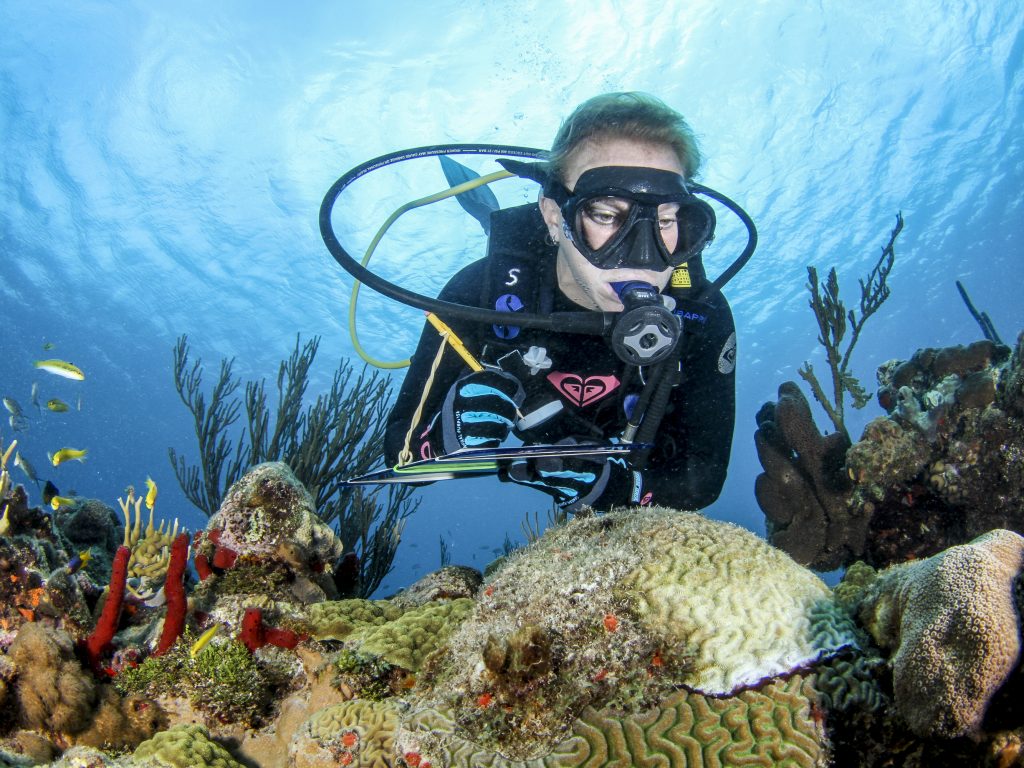Coral Disease
Coral disease outbreaks are a serious threat to coral reefs, causing death to hard and soft corals over extensive areas. Managers confronted with a coral disease outbreak may need to predict and communicate ecological implications, measure impacts, and understand the ramifications of disease outbreaks for long-term management of reef resilience.
A coral disease response plan describes the steps for detecting, assessing, and responding to an outbreak. Because disease spread is dependent on transmission, managers may focus on intervention of disease transfer. Disease can spread rapidly through a coral reef ecosystem, but disease outbreaks can also persist for months to years. This means that monitoring disease response may need to be sustained for many months or even years.
Like bleaching response plans, type and scale of the plan might vary greatly depending on your site and capacity. Recognizing and identifying coral diseases is critical for an effective disease response, and in many locations coral reef managers may need to rely on special expertise or may want to implement a program to build capacity in this area. Fortunately, there are some excellent guides and tools (e.g., Raymundo et al. 2008) to assist in the identification and management of coral disease.
Assessment and Monitoring
If resources are available, managers may implement detailed disease assessments. Such assessments include quantification of susceptible species, prevalence (i.e., proportion of corals affected), and a description of lesions on affected corals. ref Microbiologic, molecular, and histological analyses may also be conducted, requiring the collection of coral and environmental samples.

Surveying diseased coral in St. Croix, U.S. Virgin Islands. Photo © John Melendez
Management Response
Once managers determine “baseline” conditions, assessments can be made as to what represents above-normal disease levels and their potential for increased mortality. ref Several techniques and strategies used by managers are detailed below.
Direct management actions to alleviate infections may be possible in the case of a few pathogens. ref For example, there has been some success in controlling the spread of black band disease during warming anomalies by aspirating the band using large syringes or pumps. Clay or underwater epoxy putty can then be placed directly over the band to halt cyanobacterial growth left in the underlying coral skeleton.
This technique has also been successfully attempted with yellow band disease, white plague, and white band disease. If this approach is used, it should be done with great care to avoid spreading cyanobacteria and other microorganisms from a diseased coral to surrounding corals. ref Surgical removal of diseased parts has also been used successfully to treat some coral diseases.
Managers have restricted access to sites with high levels of disease with the aim of reducing transmission to unaffected sites. Another strategy involves controlling factors that exacerbate coral disease such as sedimentation and reduced water quality. ref
Implementation of these strategies requires proper handling of diseased corals, reduction of movement between dive sites, and only moving from non-infected sites to infected sites. ref
Networks of dedicated and qualified scientists and managers who can be contacted for assistance, information, and advice are available. For example, the Coral Disease and Health Consortium (CDHC) was created as a cooperative effort linking representatives from U.S. agencies involved in coral reef management.
Resources
Coral Disease Handbook: Guidelines for Assessment, Monitoring and Management
Field Manual for Investigating Coral Disease Outbreaks
Great Barrier Reef Coral Disease Risk and Impact Assessment Plan
Dominican Republic Disease Action Plan
Coral Reef Resilience Online Course, Lesson 6: Management Strategies for Resilience
